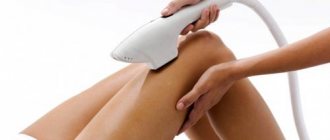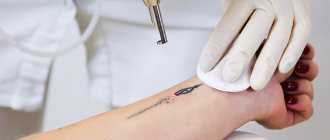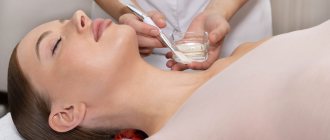- Lipofilling of lips
- Lipofilling of the area around the eyes
- Lipofilling of nasolabial folds
- Lipofilling of cheekbones
Facial lipofilling is a rejuvenating operation that corrects problem areas of the face. It is performed as an alternative to contouring based on hyaluric acid. With the help of lipofilling, the following areas are corrected and filled with the patient’s own adipose tissue:
- Upper and lower eyelid area
- Nasolacrimal groove area
- Forehead and brow area
- Zygomatic zone
- Nasolabial fold area
- Lip area and others, depending on the indications.
With age, the fatty frame of the face thins and the face becomes skeletonized, which gives the appearance a tired and aged appearance. With the help of lipofilling, comprehensive facial rejuvenation occurs, areas that have lost volume are replenished, with maximum harmonization of appearance.
Total facial lipofilling after primary rehabilitation
Total facial lipofilling: primary rehabilitation
Lipofilling can be performed both on the entire face area and on individual areas that require correction. Implantation of adipose tissue occurs through micropunctures, without cuts, which allows you to quickly go through the rehabilitation period without much discomfort for the patient.
Preparatory stage
After the patient and the doctor have determined the areas of future correction, the patient undergoes a series of laboratory tests for surgical hospitalization and a surgery date is set. The list of analyzes can be found in the “Information” section (make the word information clickable)
Possible consequences of lipofilling:
All patients develop small intradermal hemorrhages in the correction area, which resolve on their own within 2-3 weeks. With premature physical activity, massage, shock and pressure on the operated area, the injected fat may be displaced - this condition requires corrective surgery. If fat is unevenly distributed in different areas, corrective injection of additional fat is performed. If some of the fat is rapidly absorbed, additional surgery may be required. Otherwise, the lipofilling technique is absolutely safe, and your own adipose tissue is not rejected by the body.
The essence of the operation
This type of plastic surgery is performed without incisions, and exclusively through micropunctures of 2 ml. Adipose tissue is collected using a very thin cannula from a pre-selected and disinfected donor area. Most often, the donor zones are the knee zone and the “breeches” zone. Transplantation requires a very small amount of adipose tissue, which does not significantly change the outline of the donor areas.
Prepared adipose tissue for facial lipofilling
Lip lipofilling in progress
Removal of adipose tissue for lipofilling
Once the desired amount of fat is collected, it is centrifuged, purified and implanted through micro-incisions into pre-marked fat grafting areas.
The duration of the operation directly depends on the number of correction zones, and varies from 45 to 65 minutes.
Lipofilling technique:
As a rule, there are no problems with the place from which the fat is to be removed.
These are mainly the thighs, buttocks, and abdomen. Before lipofilling, the area where the fat will be removed and the area where it will be injected is numbed with lidocaine or another anesthetic. The sampling is performed using a special microcannula needle, which is connected to a syringe. Negative pressure is created in the syringe, and fat is collected in a back-and-forth motion in various directions. The fat settles in a special solution and is washed from the blood several times. Then fat without impurities is injected into problem areas. The duration of lipofilling depends on the scope of the operation. And it can take from 1 to 2 hours. The patient's stay in the hospital is usually not required.
Most often, fat is injected into the area of the nasolabial and nasolabial grooves, the upper eyelids (mainly during blepharoplasty), into the lips, glabella, and dorsum of the hand. For example, on the face, 5-10 ml of fat is injected into each groove, performing hypercorrection taking into account the upcoming resorption of part of the fat. The surgeon models the injected fat under the skin with his hands, achieving the best aesthetic result.
Lipofilling at Dr. Grishkyan’s clinic in Moscow
Facial lipofilling
| Operation name | Cost in rubles |
| Lipofilling of the upper eyelids | 160000 |
| Lipofilling of the lower eyelids | 160000 |
| Lipofilling of the lower eyelids with transblepharoplasty | 180 000 |
| Lipofilling of the midface, including the lower eyelids | 180000 |
| Lipofilling of the face, including the lower eyelids | 250000 |
| Facial lipofilling, including upper and lower eyelids | 310 000 |
| Lipofilling of the lower third of the face | 120000 |
| Chin lipofilling | 90000 |
| Facial rejuvenation with growth factors (“Nanofat”) | 60000 |
The first works on fat transfer
In 1919, Erich Lexer, an experienced orthopedist and brilliant plastic surgeon, one of the founders of plastic and maxillofacial surgery, published a two-volume work “Die Freien Transplantationen” (Free Transplantations), in which he described in detail the lipofilling procedure. The author believed that many diseases and defects could be eliminated using autologous fat transplantation. In particular:
- retractions and areas of depression of the soft tissues of the face;
- breast asymmetry after resection of part of the breast
- glands;
- ankylosis of the temporomandibular joint;
- deformations of facial contours with hemifacial
- microsomia;
- ankylosis of the knee joint;
- for the prevention of skin adhesions after surgery on nerves and tendons;
- when reconstructing the bottom of the orbit for subsequent placement of a prosthesis in it.
Rice. 4 Eric Lexer
In 1920, Alessandro Pennisi published the first monograph entirely devoted to lipofilling, “I Trapianti di Tessuto Adiposo a Scopo Chirurgico” (Fat grafts in surgery).
Around the same time, Hippolyte Morestin (1869-1919), the chief surgeon of the Val-de-Grace military hospital in Paris, successfully used fat grafts to improve the appearance of soldiers with scarring facial deformities after gunshot wounds.
The accumulated practical experience in the field of tissue transplantation was reflected in two treatises describing all transplants known at that time. Lipofilling has been described in detail in the literature from a clinical, histological and surgical point of view. The book "Les Greffes Chirurgicales" (Surgical Transplants), written by Placide Mauclaire (1863-1940), was published in France in 1922. It describes in great detail the technique of applying fat grafts around the tendons of the hand and restoring hand movements after the lipofilling procedure. Elimination of bladder perforation using a greater omentum is also indicated. The second book, "The Transplantation of Tissues" by Harold Neuhof (1884 -1964), was published in 1932 in the United States.
In the 20-30s of the twentieth century, lipofilling was widely used in the treatment of hemiatrophies, for the closure of mastoid and parotid fistulas, augmentation mammoplasty and correction of velopharyngeal insufficiency. Fat grafts were placed in the retropharyngeal space, thereby correcting the passage of air in the nasal passages.
In 1926, Charles C. Miller (1880-1950), a famous surgeon from Chicago, was the first to use the technique of taking fatty tissue from the anterior abdominal wall with a powerful syringe with a sharp needle for subsequent injection of this fat into areas of various defects on the face.
Rice. 5 Syringes used by Charles C. Miller for fat injections
Unfortunately, the final result of correcting soft tissue defects by filling with one's own fat was unstable and difficult to predict. It was not possible to ensure survival of relatively large volumes of transplanted fat. Resorption of adipose tissue was also a poorly predictable factor. The death of adipocytes was accompanied by their replacement with fibrous tissue and the formation of fatty cysts. Considering these aspects, many surgeons began to refuse to perform the lipofilling procedure.
Lyndon A. Peer (1898-1977) was the first researcher who began to study the further fate of transplanted autologous fat. The author assessed the weight and volume loss of large and small grafts during the first year after free grafting. In the 1950s, he concluded that fat grafts lose about 45% of their original weight and volume during the first year. Peer suggested that the cause of death of adipocytes could be their partial mechanical destruction during the fat removal procedure. Therefore, the author in his writings emphasized the importance of careful extraction of adipose tissue. Microscopic studies have shown that early revascularization of the recipient area plays a major role in fat engraftment. Those fat grafts that survived were mainly those that were adjacent to blood vessels and, accordingly, received sufficient nutrition from them. Peer argued that for better graft survival, it is necessary to reduce the size of fat grafts as much as possible.
Rice. 6 “Tissue Transplantation” by Lyndon A. Peer, published 1955.
Facial lipofilling
When using online services of the website evropa-clinic.ru. The visitor provides personal information about himself: last name, first name, contact phone number, e-mail.
In accordance with the requirements of Articles 9.10 of the Federal Law of July 27, 2006 No. 152-FZ “On Personal Data”, I confirm my consent to processing by authorized employees of LLC MC “EUROPA”, location: Russia, 153000, Ivanovo, Markhlevskogo Lane, 17 (hereinafter referred to as the “Operator”) of my personal data, including: last name, first name, patronymic, email address, contact phone number, data on the state of my health (including, but not exclusively, medical history, diagnosis ), about cases of seeking medical help, a list, duration and volume of consulting services provided, my photo and video images, other personal data processed for the purpose of providing consulting services).
I grant the Operator the right to carry out all actions (operations) with my Personal Data, including collection, systematization, accumulation, storage, updating, modification, use, depersonalization, blocking, destruction.
The visitor, by providing his personal data on the website, expresses his consent to the processing of his personal data by the website administrator and/or other persons whose information is presented on this website, namely: collection, systematization, accumulation, storage in the information system, extraction, use, transfer, depersonalization, removal from the information systems of the website administrator. I also give my consent to the Operator to take photos and videos, audio and video recordings (which will also include my photo and/or video image) of sessions when providing me with consulting services.
The Operator has the right to process my Personal Data by entering it into an electronic database.
In the process of the Operator providing me with consulting services, I grant the right to the Operator’s employees to transfer my Personal data to other officials of the Operator carrying out the Operator’s business activities and to third parties authorized by the Operator to process personal data in connection with the technical need for processing in the Operator’s databases, subject to mandatory compliance with the terms and conditions confidentiality of the processed data, the Customer of the consulting services provided to me and his authorized representatives.
This consent is valid for an indefinite period.
The storage period for my Personal Data corresponds to the validity period of this consent.
The Operator informed me and I agree that I have the right to withdraw my consent to the processing of Personal Data by submitting a corresponding written statement on paper to the Operator against signature. If the application is sent by mail or transferred to the Operator through another person, then the authenticity of the signature on it must be notarized.
The future of lipofilling
Claudio DeLorenzi (2012) in his article on the future of fat grafting wrote: “The story of fat grafting cannot be told without thinking about the fate of stem cells. Understanding how ADSCs interact with each other and with their environment is critical. Fat grafting is a complex topic, with considerations that belie its deceptively simple appearance. As we learn more about adult stem cell derivatives, active cellular mediators, hormones, and their interactions, increasing our knowledge of the fundamental biology of these processes will allow us to achieve increasingly better outcomes for our patients.
Although no one can predict the future, I suspect that fat grafting will play an important role in the evolutionary development of plastic surgery. Just as skin grafts, skin flaps, and free tissue grafts have done previously, a thorough understanding of ADSCs will lead plastic surgery forward so that it remains important, relevant, and at the forefront of modern medicine.”
If you still have questions after reading the article about fat transfer, call and make an appointment with a plastic surgeon at the clinic and 8 (921) 99-22-335.










